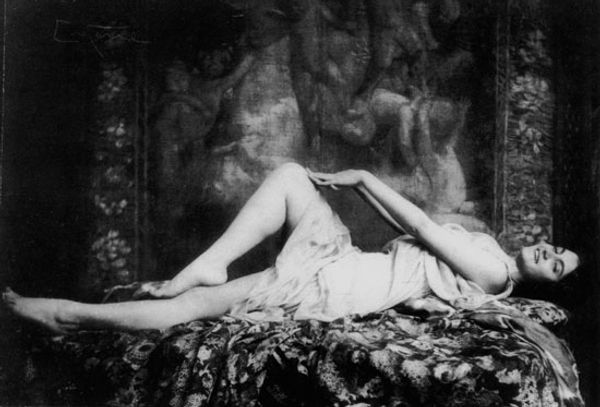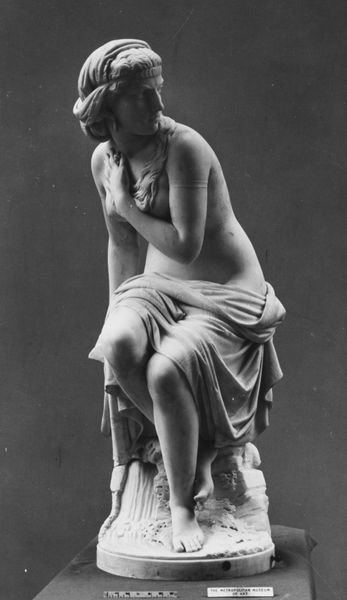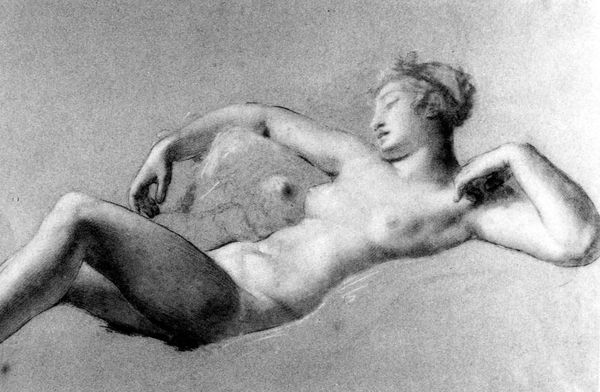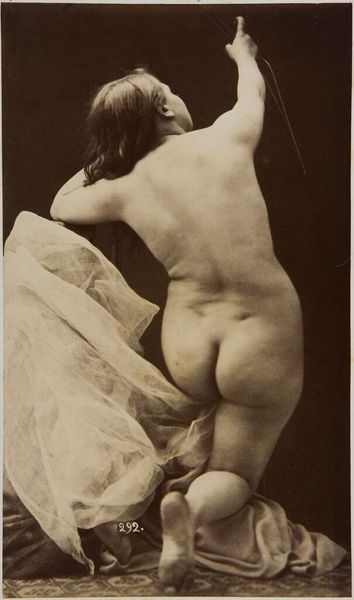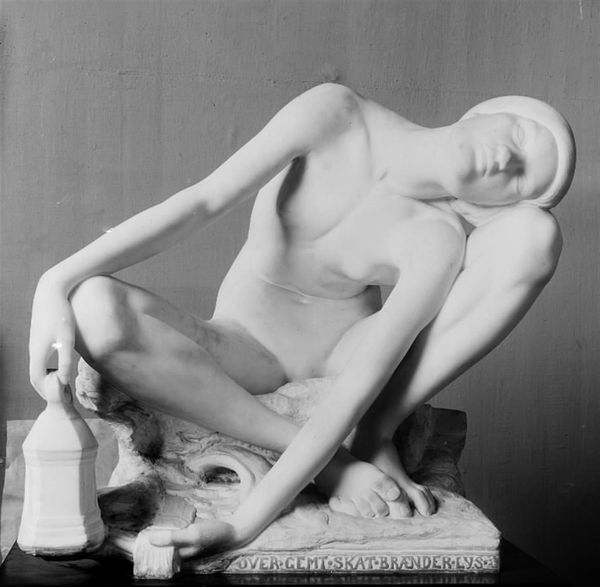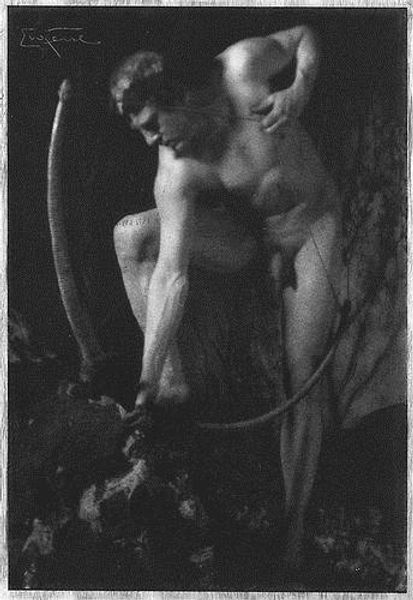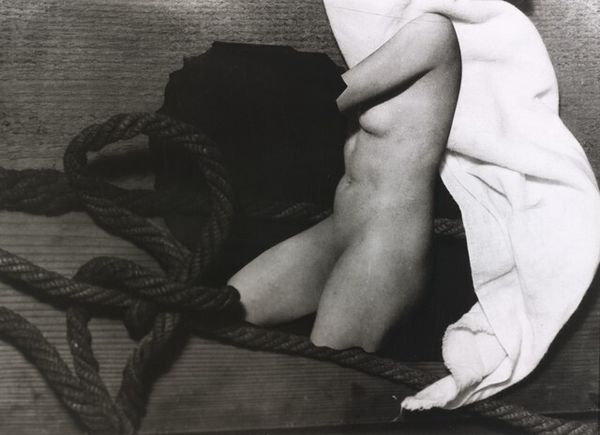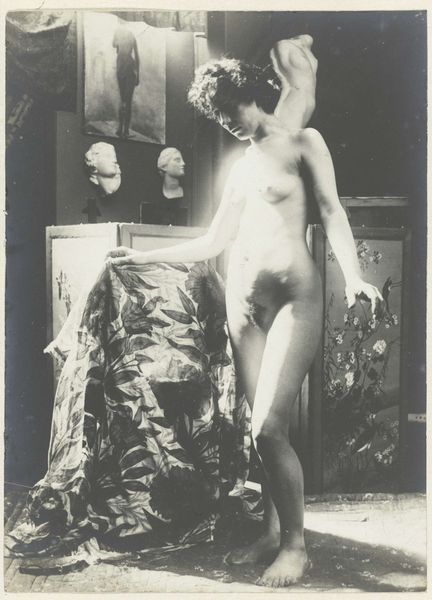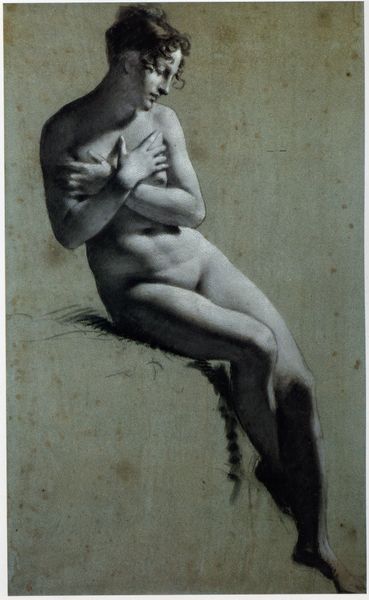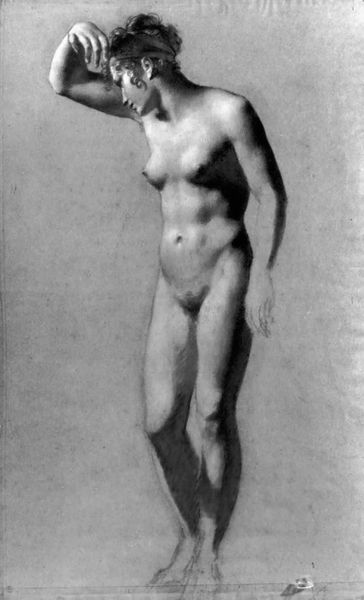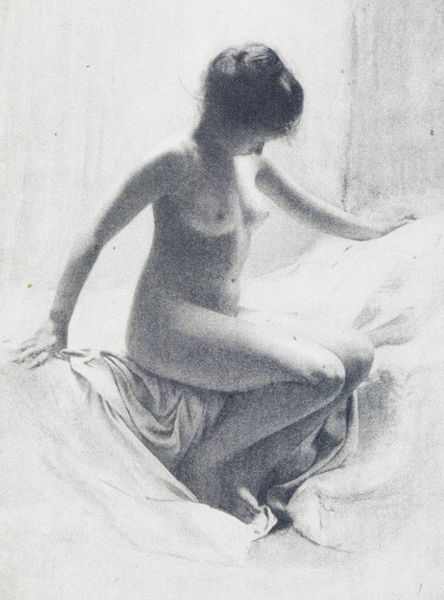
Dimensions: 93 x 75 cm
Copyright: Public domain
Curator: Standing before us is "Odalisque," painted by Francesco Hayez in 1867, a captivating work rendered in oil paints. It currently resides in the Palazzo Brera in Milan. Editor: My first impression? Melancholy, definitely. The grayscale palette really pulls you in, doesn't it? Her pose, the almost theatrical draping... It feels like she’s acting a part, maybe in a drama. Curator: You've picked up on a key aspect. The "Odalisque" subject—the concubine—became a popular trope in 19th-century European painting. Often these depictions served as projections of Western fantasies onto the "Orient." Hayez, while seemingly participating in this tradition, also imbues the figure with a sense of interiority, perhaps challenging the typical objectification. Editor: Exactly! There's an agency there that surprised me, even though the grayscale treatment mutes the supposed "exoticism." Her gaze isn’t inviting. She looks…lost? The lack of bright colours feels like a deliberate choice to counter the usual Orientalist gloss. Instead, we are face to face with a woman's feeling, something introspective. Curator: Indeed. Hayez was deeply involved in the Italian Risorgimento, the movement for Italian unification. Though seemingly a departure from overtly patriotic themes, we could argue that "Odalisque," in its subversion of Orientalist clichés, also reflects Hayez's subtle challenge to dominant European narratives of power and identity. It prompts reflection on how female bodies, especially those perceived as "other," are presented and consumed. Editor: And the tension between the intimate and the performed is so potent. It makes you wonder about the relationship between the artist and the model. There is also an aspect of timelessness. Curator: Ultimately, "Odalisque" complicates the standard Orientalist reading through both pose and shading, by inviting us to see the subject not as a spectacle, but as an individual caught in a complex web of cultural and historical forces. It remains a poignant reminder of art’s capacity to question prevailing ideologies. Editor: Absolutely, I found her expression to be captivating and memorable. Something haunting that lingers long after you've looked away.
Comments
No comments
Be the first to comment and join the conversation on the ultimate creative platform.
